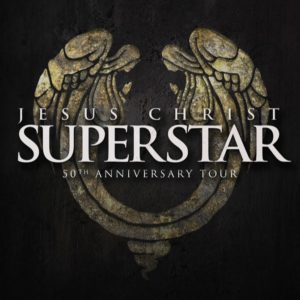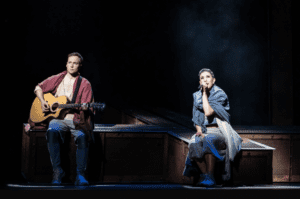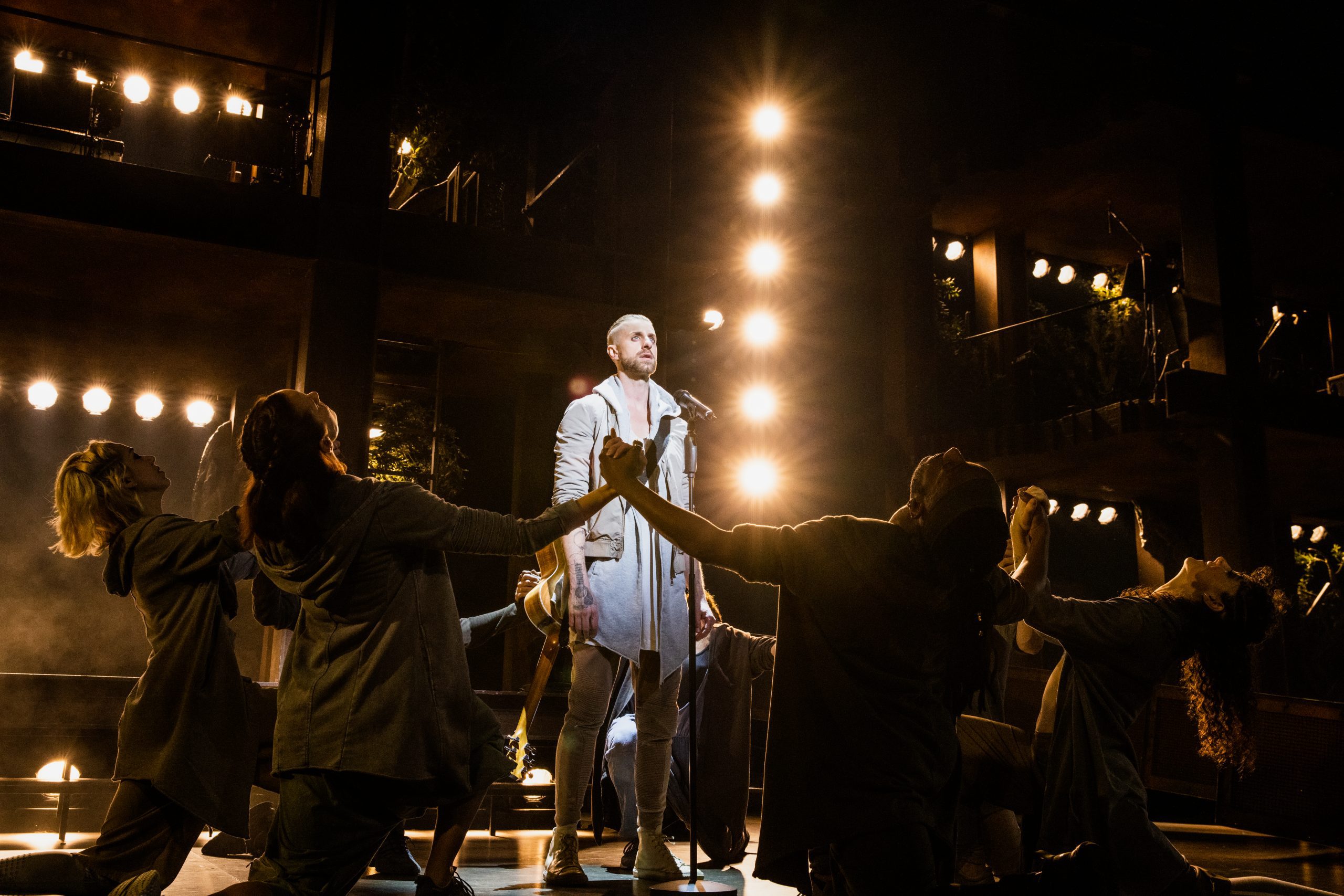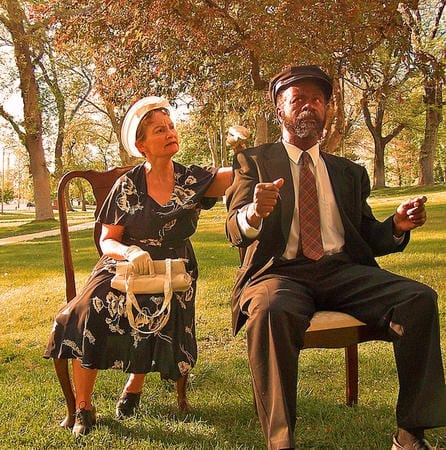SALT LAKE CITY — Jesus Christ Superstar first conquered the stage in 1971. Subsequent revivals have dotted the globe and affirmed the supremacy of Andrew Lloyd Webber’s rock score and Tim Rice’s lyrics. Now, the titan of musical theatre celebrates its legacy with a dazzling 50th Anniversary Tour.

Show plays in Salt Lake City through May 15, 2022.
The show takes place during the final week of Jesus’s life—covering events such as his ride into Jerusalem, Judas’s betrayal, and the Crucifixion—but the Bible only informs the plot so much. The show takes creative liberties by exploring the minds of figures like Judas, Mary Magdalene, and Pontius Pilate in addition to Jesus. While Judas is portrayed as an altruistic disciple who betrays Jesus for a greater cause, the show endows Christ with a good deal of humanity, making him a man who is quick-tempered and afraid of death. It is only Jesus’s godlike ability to scream his face off that makes him deity here.
The genius of director Timothy Sheader’s production is how it harnesses the transcendent quality of song and dance to tell a story of epic proportions. The curtains opened on a dark stage with a single guitarist bathed in a white spotlight. Standing on the second floor of the set, his face shrouded by his hood, he shredded a foreboding solo that sounded like it could have pronounced Jesus’s death sentence. A rock opera in its most glorious form.

Left to right: Omar Lopez-Cepero as Judas and Aaron Lavigne as Jesus. Photo by Matthew Murphy and Evan Zimmerman.
Many other moments were a spectacle to behold. During the scene when Jesus banishes merchants from the temple, a torrent of gold confetti washed over the red-lit stage. Alvin Crawford (as Caiaphas) and Tyce Green (as Annas) were a vocally dazzling duo. I would be amiss not to mention Paul Louis Lessard’s (in the role of Herod) hilariously self-indulgent performance while wearing a huge gold cloak. I am still floored listening in my head to Aaron LaVigne (as Jesus) sing his high notes with a rasp that pierced the soul like a nail through a hand. The ensemble wielded everything from metal palm leaves to LED crosses as they executed Tim McOnie’s stunning choreography. Drawing from a contemporary movement vocabulary, McOnie’s work set the mood of each scene just as much as the music did.
That mood-setting was important because the plot was sometimes hard to follow. I probably would not have known what was going on had I not seen the 1973 film version. That could be because of how Superstar is written and also because some costumes by Tom Scutt served as aesthetic pieces and not obvious indicators of character. Nevertheless, I appreciated how Scutt updated the wardrobe instead of imitating the original movie. At first, I was surprised to see the the cast’s athleisure wear and the ponytails with shaved sides that some of them sported. Although I had imagined that the show’s groovy soundtrack made Jesus Christ Superstar a quintessentially 1970s show, I loved the choice to ditch the bell-bottoms for the Adidas sweatpants, making it a story for the present day.

Left to right: Tommy McDowell as Peter and Jenna Rubaii as Mary. Photo by Matthew Murphy and Evan Zimmerman.
If the show delivered with its big moments, another one of its strengths was its balance between spectacle and intimacy. I was touched by LaVigne as he tearfully submitted to his coming death in “Gethsemane.” Just as shattering was the following moment when Omar Lopez-Cepero (playing Judas) gave Jesus the kiss that consummated his betrayal against the man he had once loved and worshipped. McOnie’s choreography worked not just during high energy numbers but during quieter moments, too. Thanks to the flexible ensemble, I was equally pumped up by the movement of “Simon Zealotes” and entranced by the soothing groove of “Everything’s Alright.”
The show’s careful balance between spectacle and intimacy culminated in the haunting image of the ensemble approaching Jesus’s bloodied body one at a time to spew at him a handful of gold glitter. The image reminded me of the long artistic tradition of depicting Jesus’s grotesque suffering. That said, I often question the value of violence in media because of how it can generate more violence in the world. Putting the ethics of it aside, Sheader staged the crucifixion to maximum effect: I was moved and left wondering what forces could have combined to torture a person the way Christ was. With the rest of the stage black, intense white lights backlit Jesus as he hung on the cross, creating a picture that was both majestic and defeated, tender and larger-than-life—the crux of Christianity summed up.
If anything, the 50th anniversary tour of Jesus Christ Superstar was an experiment in what happens when blood and glitter mix—when ballads intersperse rock and roll numbers, when humanity at its most vulnerable meets big-time spectacle, when a person like Jesus is inserted into a vicious political machine. The result is a powerful piece of theatre. No matter their religious beliefs, Jesus Christ Superstar is a must-see for Utah audiences, who can witness a production that is thrilling and immortal.

These reviews are made possible by a grant from the Salt Lake County Zoo, Arts, and Parks program.





